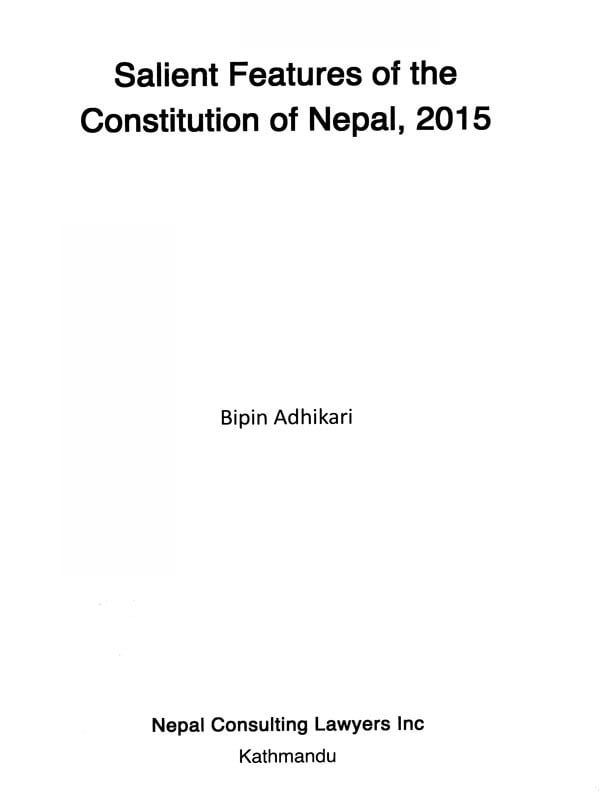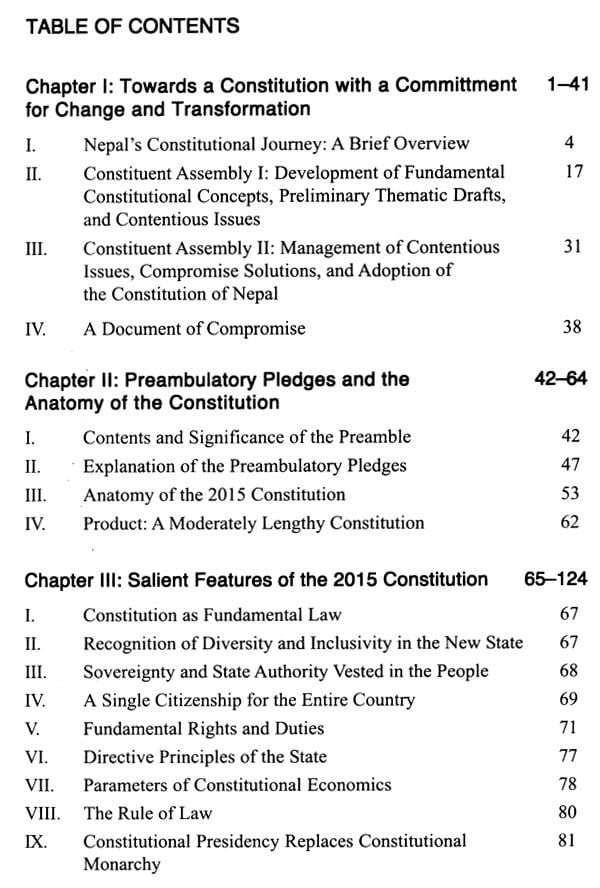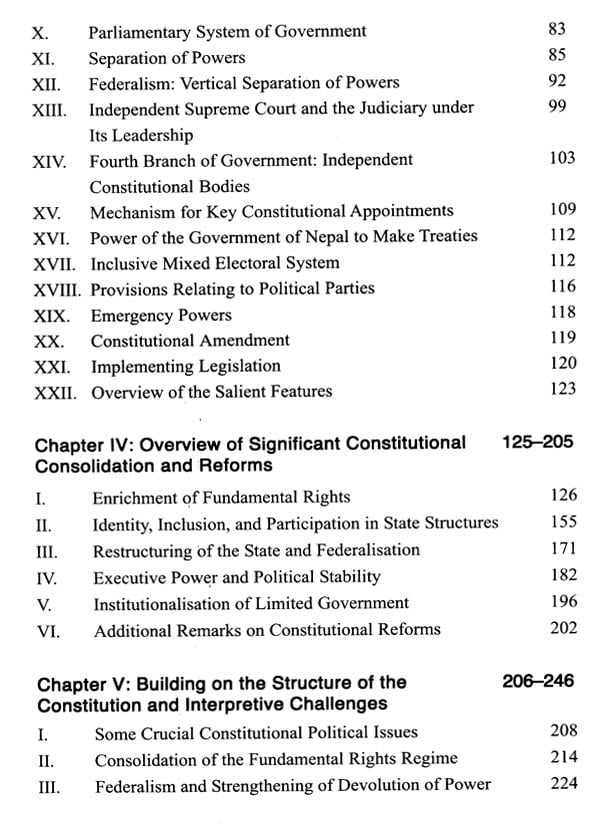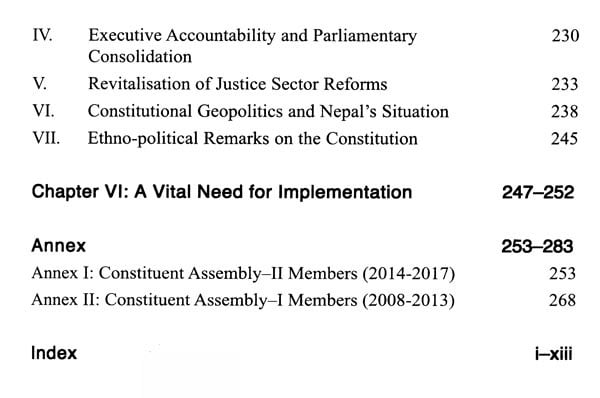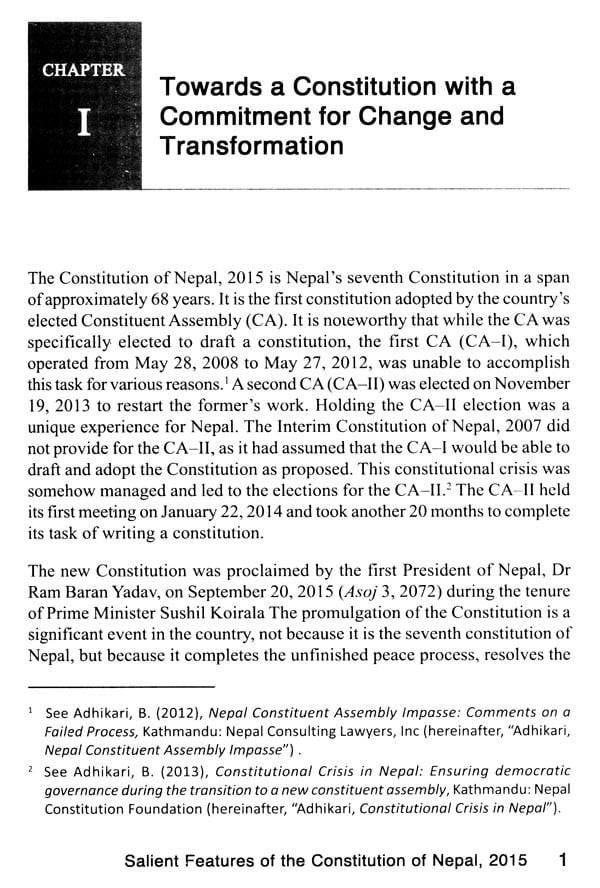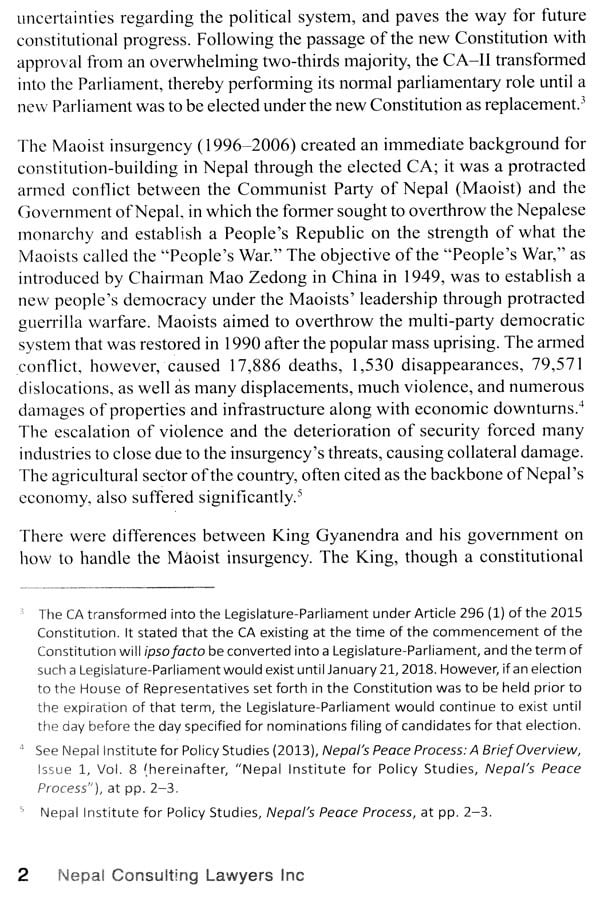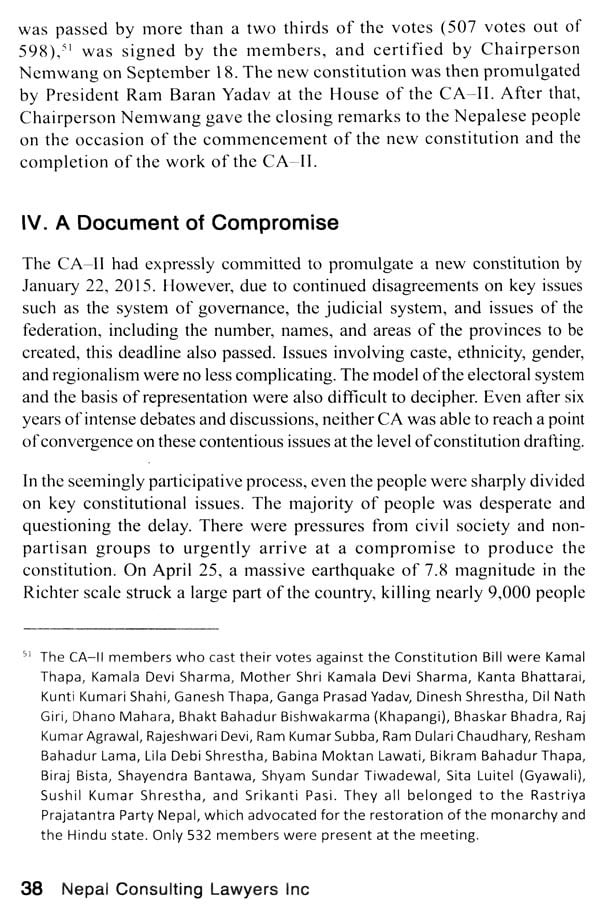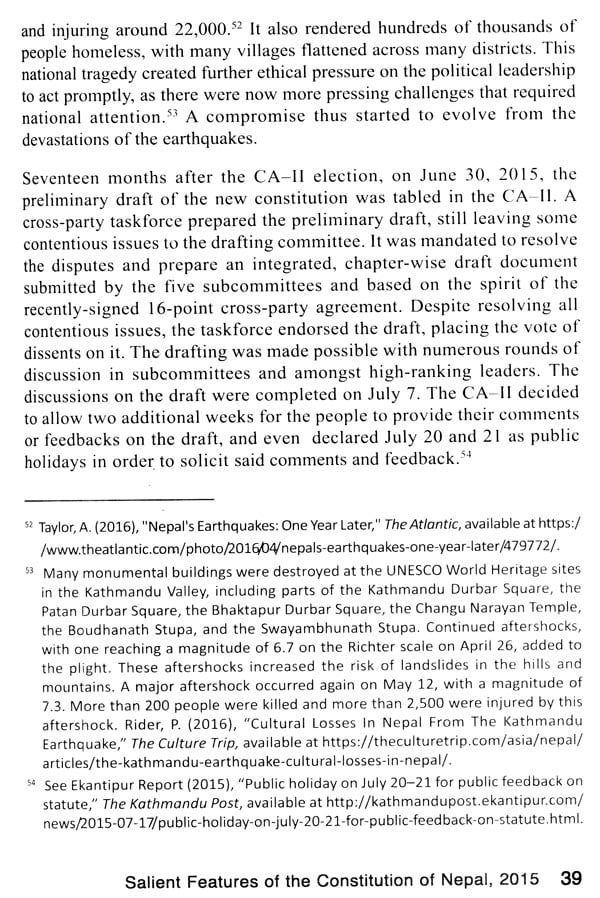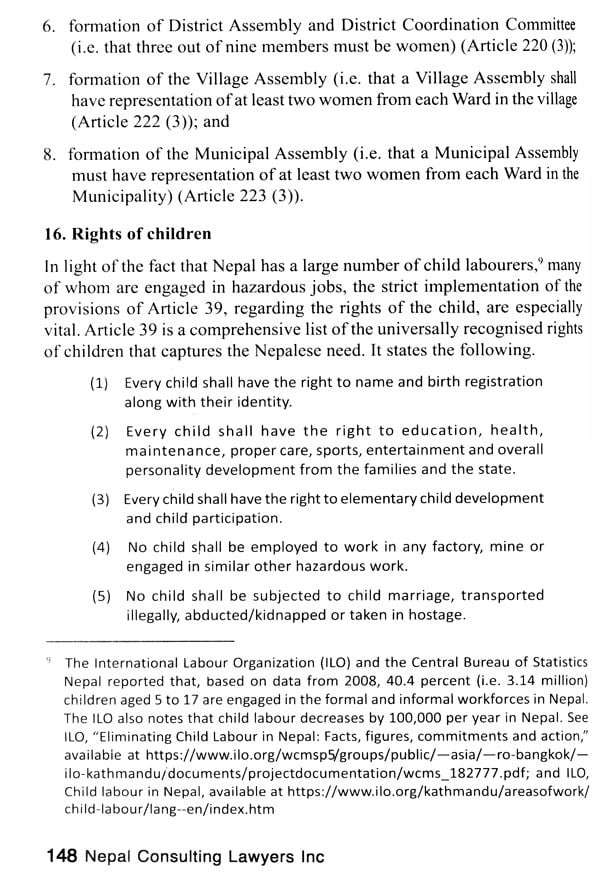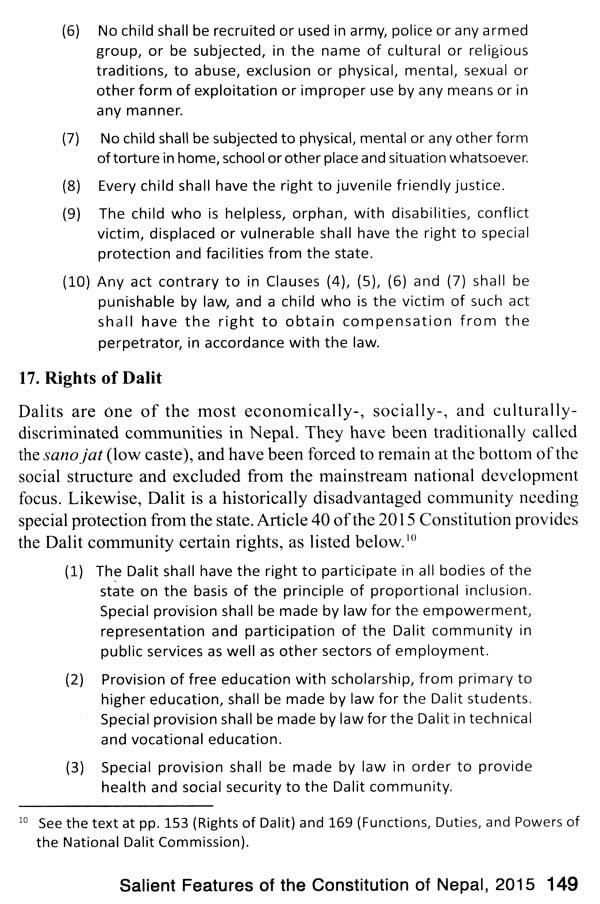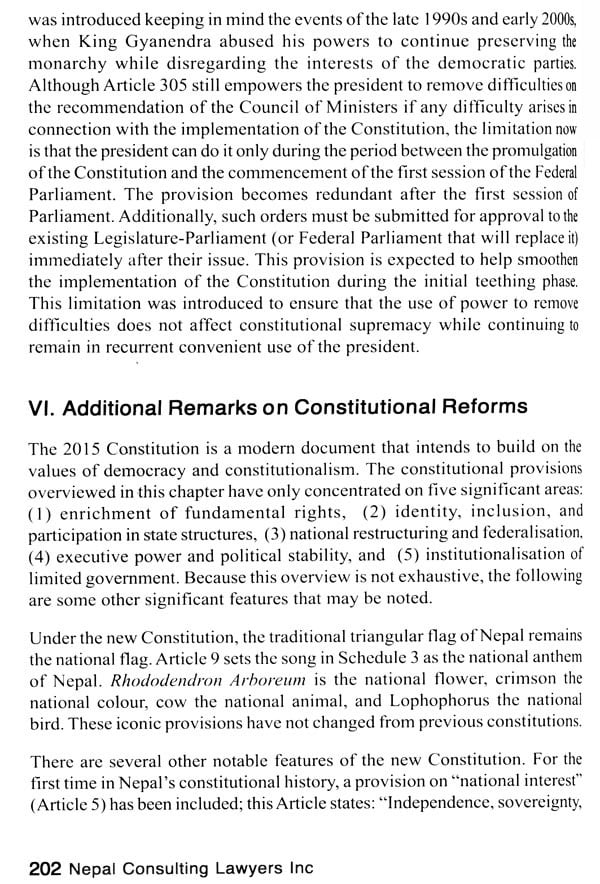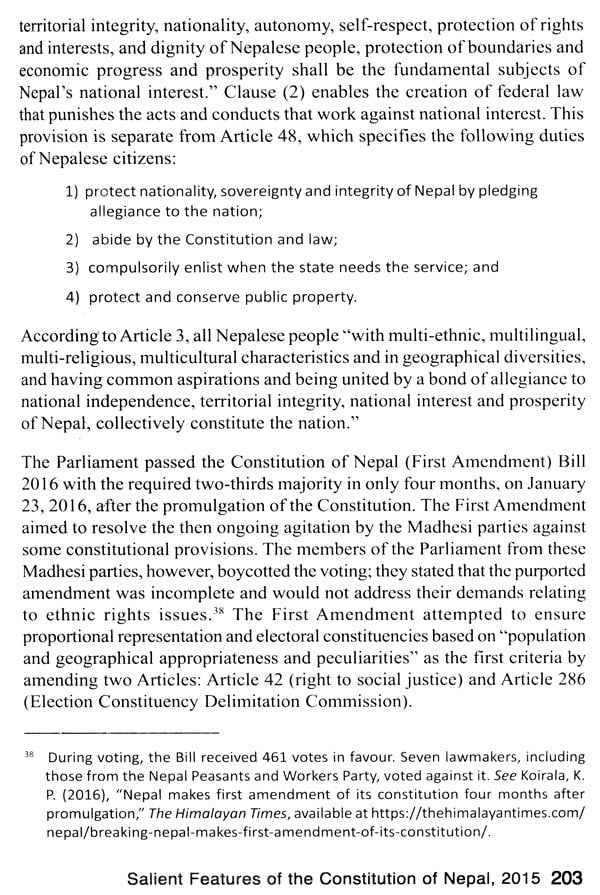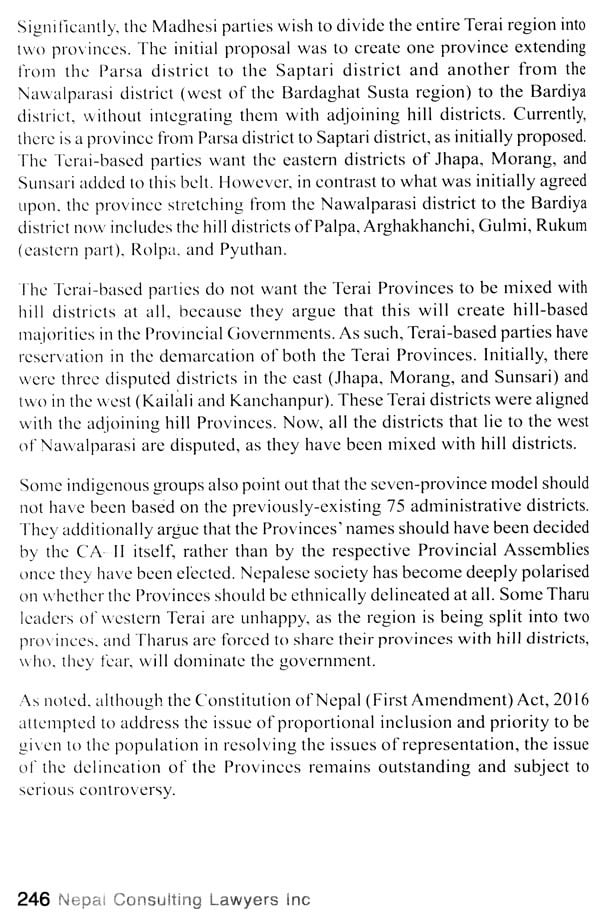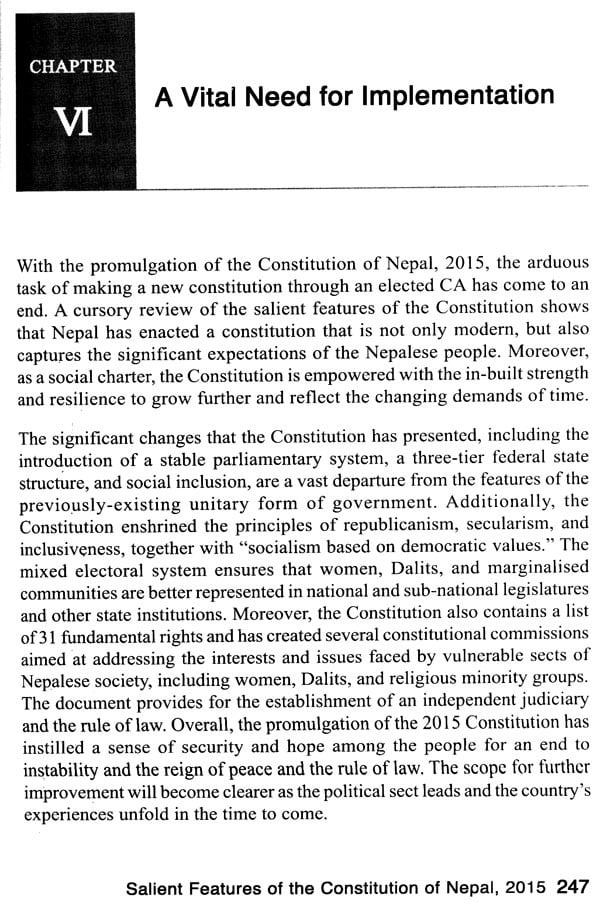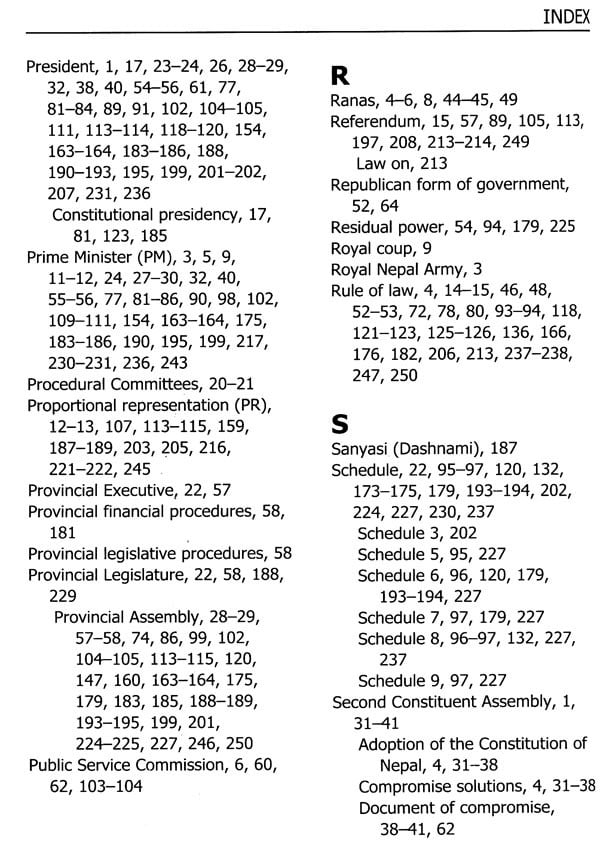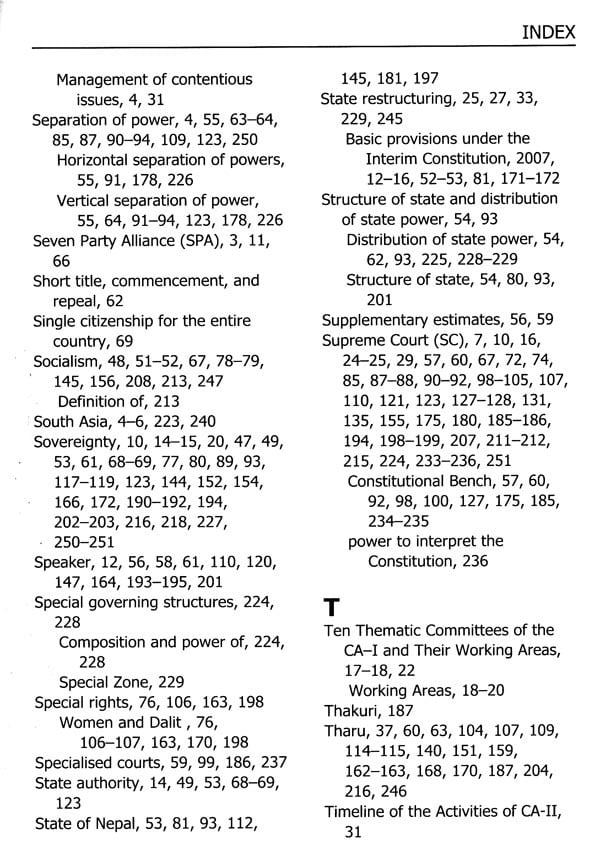
Salient Features of the Constitution of Nepal, 2015
Book Specification
| Item Code: | UAO275 |
| Author: | Bipin Adhikari |
| Publisher: | Nepal Consulting Lawyers Inc, Kathmandu |
| Language: | English |
| Edition: | 2016 |
| Pages: | 308 |
| Cover: | PAPERBACK |
| Other Details | 9.00 X 6.00 inch |
| Weight | 510 gm |
Book Description
first Constituent Assembly, beginning May 28, 2008, was unable frame government the was unable gear the efforts to promulgate the new constitution mobilize support within Constituent Assembly create alternative arrangement by amending the existing Constitution. Amidst series of constitutional crises, new Constituent Assembly was elected on November 2013 order pursue a second constitution building. This how the Constitution of Nepal, 2015 was finally adopted. thus replacing the Interim Constitution of Nepal, 2007.
The new Constitution unique sense it elected constituent assembly for the first time in Nepal's history. It distinctive also it based on republican values, three-tier federal system, many new economic, social, and cultural rights guaranteed people. As Constitution that aims create an inclusive democracy the country, it also intends protect the rights of indigenous peoples and minorities as well others facing structural disadvantages. The new Constitution distinguishingly introduces parliamentary form government, integrated newly federalized country, and devolution power local level. Compared Nepal's previous constitutions, this Constitution is certainly above, and, implemented right spirit dedication, will empower the people Nepal, help build an inclusive political order, serve as a springboard for the country's socioeconomic political development.
Salient the by Dr. Bipin Adhikari, leading constitutional expert, describes the contents of the new Constitution from perspective the Constitution of the 2015 a document compromise between many political parties.
In an environment of political instability, where the people have failed to prevail, Nepal has produced seven constitutions in a span of more than 67 years. The people's representatives, who were assigned the responsibility of framing the seventh constitution, proved to be the weakest representatives in the history of constitution-making in Nepal. They navigated through a turbulent political scenario before they eventually created a document of compromise. Even now, it is doubtful whether the document they have created will restore peace and stability in the country. What is clear, however, is that Nepal's uncertainty remains unresolved.
There are objective reasons behind this suspicion. Nepal continues to face the challenges of geopolitics and national divides along ethnic, religious, cultural, and regional lines. These challenges were continuously reflected in the seven years it took to complete the constitution-drafting process, which eventually lead to the adoption of the Constitution of Nepal, 2015. The first effort, which began in 2008 with the election of the Constituent Assembly, unsuccessfully ended in 2012. The second effort, beginning in 2013, attempted to build on the first and was eventually successful.
The final document that has been produced reflects a very uneasy political Compromise between different political parties and diverse stakeholders. The ole of external elements in shaping the constitutional outcome has been crucial The document also marks a paradigm shift in the constitutional history of Nepal, making the new Constitution very enchanting in terms of certain norms, values, stitutions, and procedures. Its new features will provide the State with a ew orientation. As a document of compromise, however, the Constitution rtainly has some shortcomings and challenges for every constituency of keholders.
**Contents and Sample Pages**
